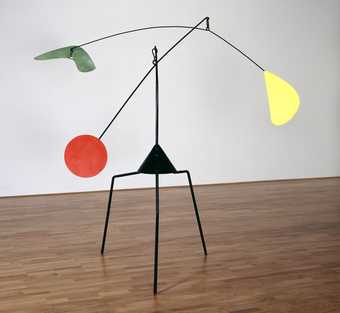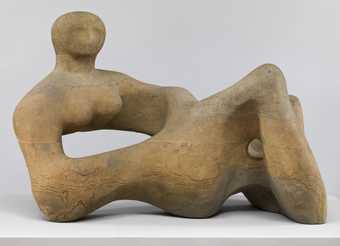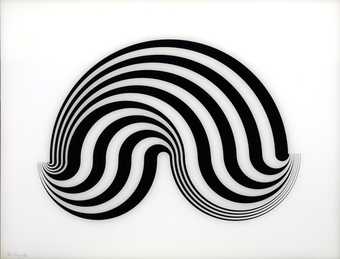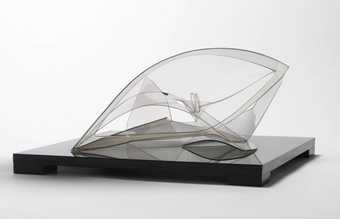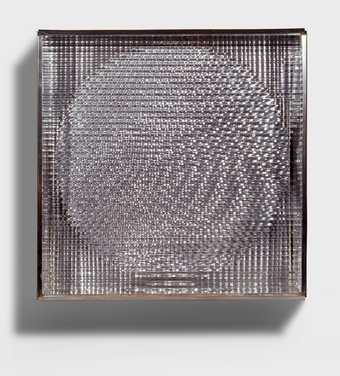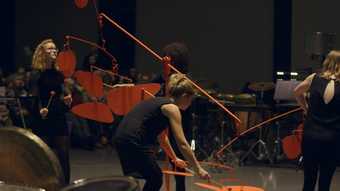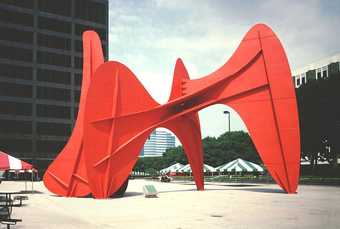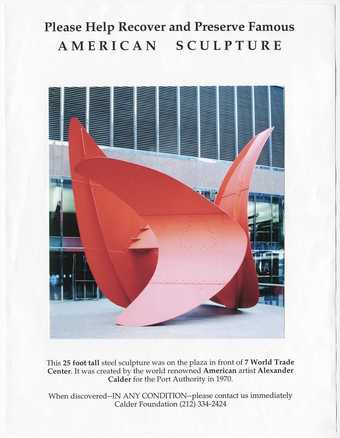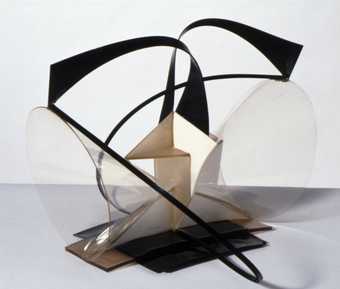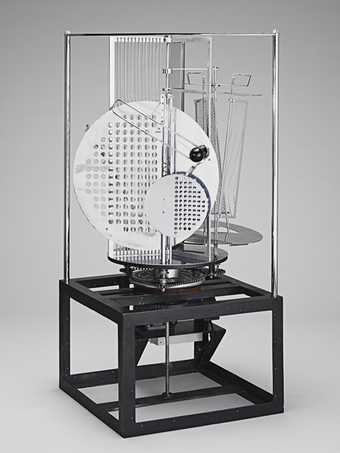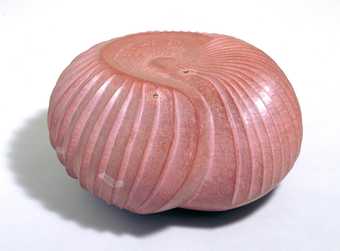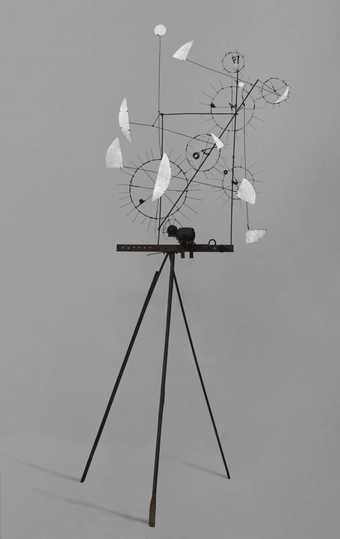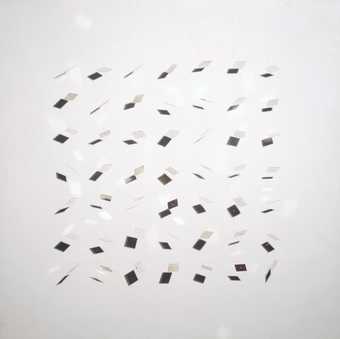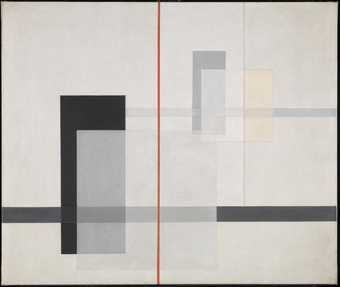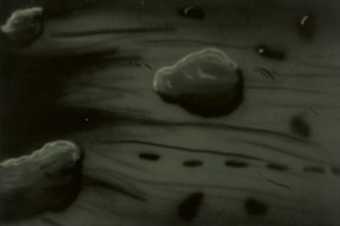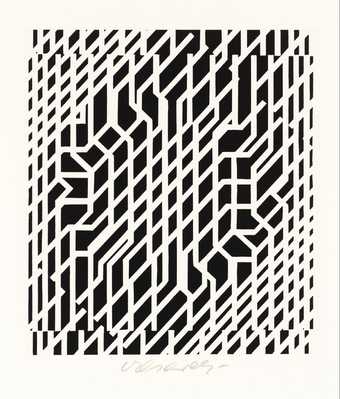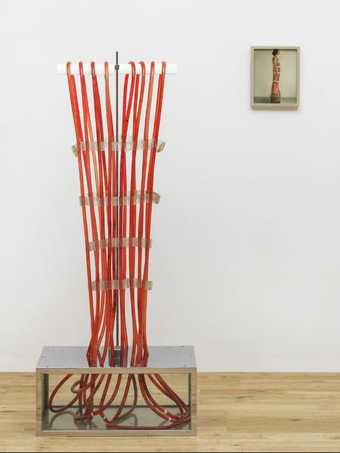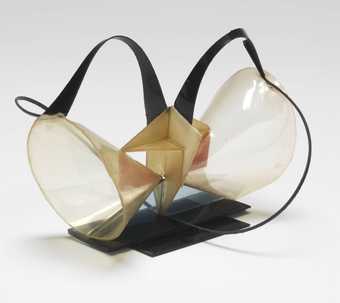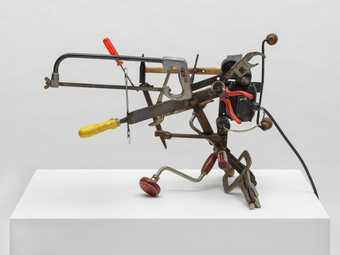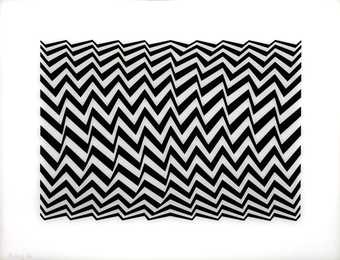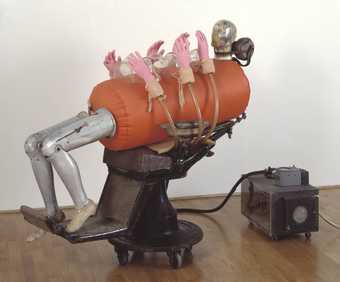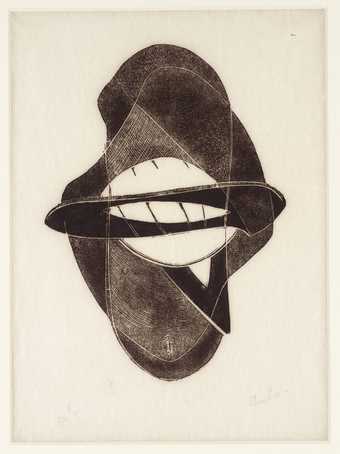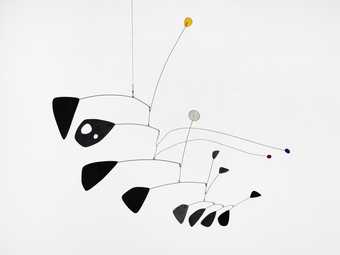
Alexander Calder
Antennae with Red and Blue Dots
(c.1953)
Tate
The word kinetic means relating to motion. Since the early twentieth century artists have been incorporating movement into art. This has been partly to explore the possibilities of movement, partly to introduce the element of time, partly to reflect the importance of the machine and technology in the modern world and partly to explore the nature of vision.
Movement has either been produced mechanically by motors, as in kinetic art pioneer Naum Gabo’s Standing Wave of 1919–20; or by exploiting the natural movement of air in a space – referred to as mobiles. Alexander Calder began to create mobiles from around 1930.
Kinetic art became a major phenomenon of the late 1950s and the 1960s. In the 1960s artists such as Bridget Riley and Victor Vasarely experimented with geometric shapes that distort the viewer’s perception, creating artworks which, although static, give the impression of movement. (See the glossary definition for op art)

